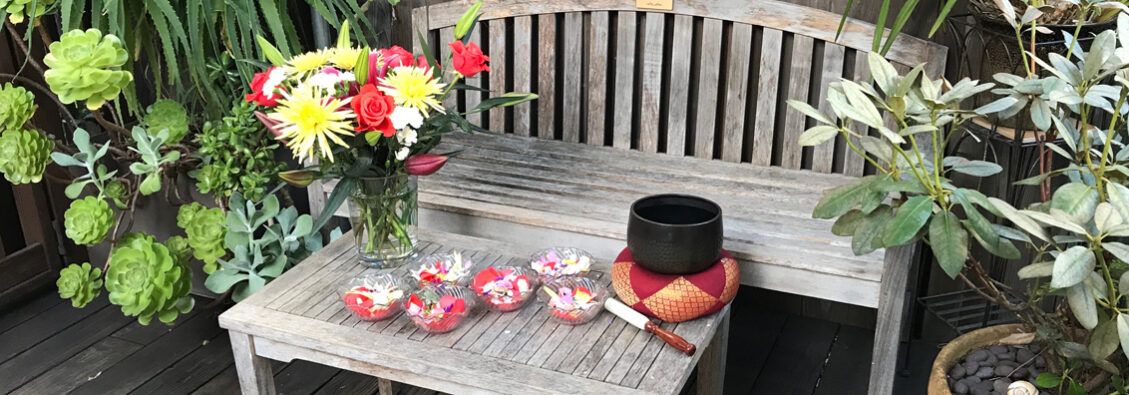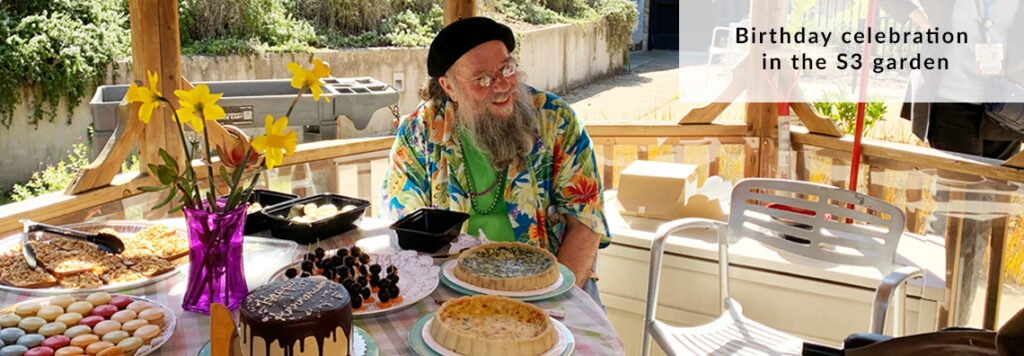Companionship and Compassion: The benefits of ZCP Volunteers on a palliative care ward

Camille Tacderan is the Daytime Charge Nurse on the South Three (S3) Palliative Care Ward at Laguna Honda Hospital, where ZCP volunteers have served for over 30 years. We spoke to Camille about the value the Volunteer Program brings, her experience of working through the pandemic, and her excitement about the Volunteer Program starting up again.
You have spent many years on the ward with the volunteers. What impact do you see them having?
Residents really benefit from having volunteers on the ward to interact with. It can be as simple as them sitting and talking with a resident in the Great Room [the communal area of the ward], or for some residents who are non-verbal just being present with them or holding their hand. Also, the volunteers are on the ward weekly and often have regular visits with residents whose conditions are changing over time, so they build a relationship with them and can tailor their interaction to that resident’s current needs.
They also support the families of residents. What is special about S3 is that it allows family members to be family members. They don’t have to be medical caregivers and instead can live their own lives and visit as sons and daughters, or spouses. The volunteers are a big part of that specialness because families know that even if they can’t be there to sit with their friends or relatives, the volunteers can be. And that is really reassuring.

For staff, more than anything else, it is just knowing that there is someone to sit with a resident when they aren’t available to do so. As staff, we are looking after a number of patients and sometimes can’t sit with people as long as we would like. Especially when that person is approaching the end of their life, it is comforting to know that the volunteers are available to be with that person in their last moments.
“It is comforting to know that the volunteers are available to be with that person in their last moments.”
You worked through the pandemic when volunteers weren’t able to visit the ward in person. How was that experience for you?
The pandemic was really challenging. On a personal level, there was a lot of anxiety around safety for yourself, your family, the residents, and the other staff on the ward.
The ward closed to visitors and volunteers early in March 2019 to protect residents and stayed closed until mid-2021. During this time a lot of residents didn’t understand what happened, some didn’t recognize staff with masks on, and some clearly missed the interaction they had with volunteers and family. For staff, it was also very difficult as we were busy adapting to new protocols and keeping residents safe, and it was at this time, when we were busier than ever, that it would have been wonderful to have the support of the volunteers who could also be with the residents.
The volunteers have started to come back in person to the ward. How do you feel about that?
I’m really excited as the volunteers are such a big help. We are getting more younger residents joining the ward, who are alert and will be in the ward for a long time so have a big need for social interaction from those around them. With our workload, the staff can’t always provide that level of interaction, which is where the volunteers come in.
Some of these younger residents come to the ward having experienced a lot of social isolation. Some have been living in COVID hotels, experiencing a lack of contact and services. Some have been living alone at home or in an SRO. It is so nice to know that they can get the companionship and interaction they want, need, and deserve when they get to the ward, thanks in a big part to the volunteers.
As the hospital is run by the San Francisco Public Health Department, we are the safety net of the city. Our residents may have been living outdoors on the streets with no family or connections and it is lovely to know that they can come to this ward and spend the last few days, months, or years of their life being cared for and that they knew there were people around them who did care about them.
“What we do on the ward is give the residents love.”
What we do on the ward is give the residents love. They are warm, get three hot meals a day, and get taken care of physically and emotionally. Volunteers are a crucial part of this as they fill the gaps when the staff can’t be there. And that is what makes the ward such a special place.
If you like what you read, please join us and enroll in one of our courses, share our work with someone you think will benefit from it, or support us through a donation.

